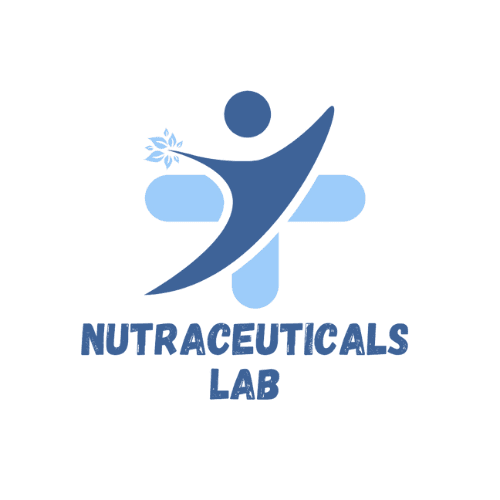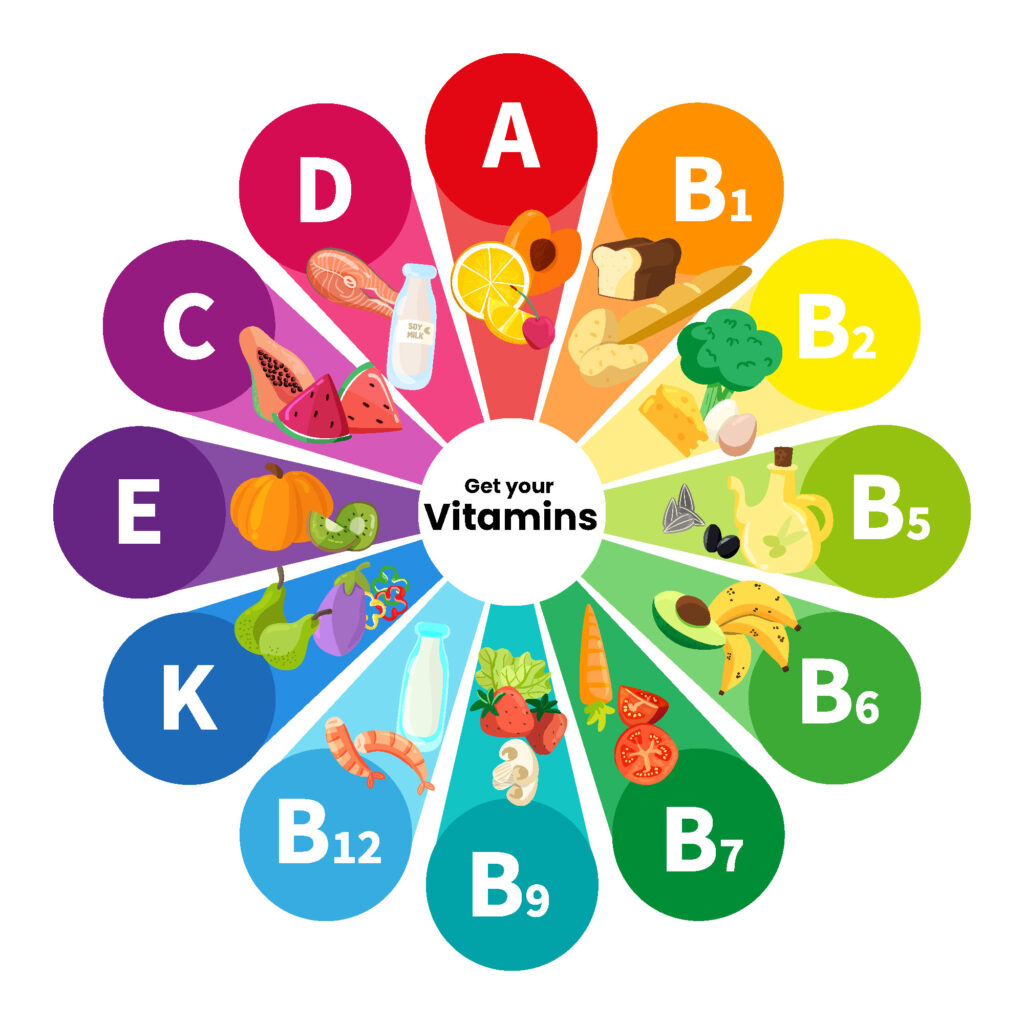Various nutrients have the ability to strengthen immunity, organs and tissues and prevent premature ageing. That’s why it’s essential to know which foods are rich in essential vitamins for the body and how to include them in your diet.
With this in mind, we’ve put together a complete list of fruits, vegetables and other indispensable ingredients for your plate, as well as preparation tips that make consumption much easier and more enjoyable.
We’re also going to highlight which vitamins cannot be missing from the body, the risks associated with their deficiency and when taking supplements is an alternative to consider.
Content
ToggleWhat are vitamins?
Vitamins are carbon-based organic substances capable of activating and regulating metabolism, as well as participating in the composition of enzymes, molecules and other components that serve as fuel for the functioning and formation of the body.
In general, humans are unable to produce these micronutrients on their own, with a few exceptions. In most cases, it is necessary to consume vitamin-rich foods to meet the body’s nutritional needs and maintain good health.
13 vitamins that can’t be missing from the body
There are 13 types of essential vitamins with their own set of benefits and biological functions that help promote health and care for the body. See what they are and what they are good for!
Vitamin A
Starting with vitamin A, we have an example with antioxidant, anti-inflammatory functions and the ability to protect and renew the structure of our cells, with notable benefits for eye and skin health.
B vitamins
The B-complex vitamins fulfill various functions and deserve a lot of attention due to their benefits. Find out more about them below.
B1 (thiamine): stimulates the proper functioning of the nervous and circulatory systems, as well as activating the metabolism.
B2 (riboflavin): able to promote the production of blood cells and stimulate metabolism.
B3 (niacin): improves nervous system activity, contributes to energy production in the body and helps prevent diabetes and various types of cancer.
B5 (pantothenic acid): helps the body break down carbohydrates and produce energy, as well as fighting high cholesterol.
B6 (pyridoxine): stimulates nerve function and helps form red blood cells.
Biotin (ex-B8): acts to strengthen tissues such as hair, nails and skin, and helps control the glycemic index.
Folic acid (ex-B9): essential for the formation of cells and protein molecules in the body, as it mediates the preservation and recovery of organic tissues. ⁴
B12 (cobalamin): contributes to the functioning and preservation of the nervous and cardiovascular systems.
Vitamin C
Continuing, we have the health benefits of vitamin C, which, as well as having an antioxidant action and stimulating healing, contributes to strengthening immunity.
Vitamin D
Vitamin D, synthesized in the body through exposure to the sun, stimulates calcium absorption, strengthens bones and muscles and has antioxidant action.
Vitamin E
Vitamin E is great for the immune system and preventing neurological problems. With a high antioxidant action, it performs functions that help delay premature aging and protect the body against chronic diseases such as Parkinson’s, Alzheimer’s and cardiovascular diseases.
Vitamin K
Finally, vitamin K is essential for good blood clotting and strengthening bone structures.
As we can see, vitamins play a number of roles in our bodies, mainly to develop, stimulate and preserve metabolism and the various types of cells that make up organs and tissues.
However, in order to benefit from these nutrients and promote a healthy life with greater well-being, it is essential to maintain adequate vitamin levels to avoid deficiencies of substances that impact the entire functioning of the body.
What are the risks of vitamin deficiency in the body?
Vitamin deficiency can lead to serious health risks, such as weakened tissues, premature cellular ageing, chronic diseases, lack of energy, difficulty healing and a higher incidence of respiratory infections such as the flu and colds.
To avoid these symptoms, the best way is to maintain a healthy diet, based on natural products from all food groups, such as cereals, grains, vegetables, fruit, meat, dairy products and eggs.
Vitamin-rich foods to include in your meals
It’s time to show you how to combine food and health! We’ve selected the most important ingredients for a nutritious diet, which can’t be left off your plate.
Check out our list of vitamin-rich foods:
Vitamin A
Carrot, mango, papaya, sweet potato, beef liver and dark leafy vegetables
Vitamin B1
Beans (and other legumes such as peas), whole grains, nuts, poultry and beef
Vitamin B2
Meat, eggs, seafood, legumes and whole grains
Vitamin B3
Oats, peanuts, beans, rice, chicken and beef
Vitamin B5
Meat, milk, eggs, dark leafy vegetables and grains
Vitamin B6
Spinach, avocado, bananas, fish and poultry
Vitamin B8
Spinach, mushrooms, milk and dairy products
Vitamin B9
Beet, spinach, broccoli, cabbage, egg and wheat germ
Vitamin B12
Meat, eggs and dairy products
Vitamin C
Orange, lemon, acerola, strawberry, cashew and other citrus fruits
Vitamin D
Dried mushrooms, eggs, meat, milk and dairy products
Vitamin E
Cereals, olive oil and oilseeds in general, such as chestnuts, walnuts and almonds
Vitamin K
Dark leafy vegetables such as kale, spinach and arugula
Tips for preparing and consuming vitamin-rich foods
Just as important as knowing what to eat is understanding how to prepare vitamin-rich foods. After all, it’s essential to preserve their nutritional value as much as possible.
Here are 9 tips for consumption.
Prefer organic food whenever possible.
Consume fresh fruit whenever it’s safe to do so.
To eat fruit, vegetables, cereals and dairy products, making smoothies is a good idea. Combine the frozen pulp of your favorite fruit with a neutral-tasting leaf, such as kale, and a plant-based drink, such as rice milk or oat milk, or milk and yogurt.
Wholegrain cereals are usually healthier.
Choose lean cuts of meat for your main meals.
Avoid over-consuming foods high in sugar, sodium or ultra-processed foods.
Plan your meals for the week, buy the ingredients and prepare everything at once to save time.
Look for alternatives from each season and region where you live to save on purchases and get fresher products.
Explore new flavors and dishes, as this is the best way to encourage a diverse and vitamin-rich diet.
3 tasty recipes with vitamin-rich foods
To put the preparation and consumption tips into practice, we’ve put together special recipes with foods rich in vitamin C and other micronutrients. See how much easier it is than you think to adopt a healthy diet on a daily basis.
- Salad with guacamole sauce
Salad ingredients
300 g broccoli
150 g minas cheese
1⁄2 medium onion
1⁄2 medium carrot
1⁄2 medium cucumber
1 medium tomato
Ingredients for the guacamole sauce
1⁄2 medium avocado
1⁄2 medium lemon
2 tablespoons light cream
1⁄2 medium tomato
1⁄2 medium onion
Coriander to taste
1 pinch of herb salt
Directions
Cut the carrots into medium-sized cubes and steam them. When it’s almost cooked (al dente texture), add the broccoli.
Thinly slice the cheese, onion, tomato and cucumber and add them to the carrots and broccoli. Stir well to combine all the ingredients.
For the dressing, blend the avocado with the lemon juice and the other ingredients in a blender until smooth. Finally, add the coriander to taste.
- Cream of pea soup
Ingredients
500 g dried peas
200 g minas frescal cheese
4 cloves of garlic
1⁄2 medium white onion
1⁄4 small bunch of coriander
2 pinches of black pepper
2 heaped tablespoons of olive oil
2 teaspoons of herb salt
Directions
Cook the peas in water until soft.
Let the cooked peas cool and blend in a blender.
Sauté the onion and garlic in olive oil.
Add the creamed peas and the herb salt and pepper. Leave to cook over a low heat.
Check the consistency and add a little more water if necessary.
Finally, add the fresh minas cheese and chopped coriander.
- Ginger cake with orange syrup
Dough ingredients
4 medium oranges
1 teaspoon orange zest
6 eggs
2⁄3 cup oven and stove sweetener
2⁄3 cup canola oil
2 dessertspoons powdered ginger
1 cup rice flour
2⁄3 cup linseed flour
1 cup potato starch
2 teaspoons baking powder
2 pinches of salt
Syrup ingredients
12 medium oranges
1 1⁄3 cup oven and stove sweetener
2 dessertspoons potato starch
Preparing the dough
Grate the orange peel finely (without the white part).
Prepare the juice from the oranges and set aside.
Separate the egg yolks from the egg whites, then beat the egg yolks with the sweetener in a mixer
until they form a white cream.
With the mixer running, add the oil, juice, orange zest, ginger powder and, little by little, the flours.
Finally, add the baking powder and set aside.
Beat the egg whites with a pinch of salt in a mixer.
Then gently mix the egg whites into the batter.
Pour the batter into the buttered tin and bake in the preheated oven at 170°C for 20/30 minutes.
How to prepare the syrup
Mix all the ingredients together and bring to the boil over a low heat, stirring constantly, until it thickens a little.
Pour the syrup over the cake and serve.
Suggestion: use cupcake liners to make several cakes.
How can I improve the absorption of vitamins and nutrients?
There are some practices that help improve the absorption of vitamins and other nutrients in the body, such as food combinations that enhance this process. Here are three tips to adopt in your meals!
Consume vitamin C with iron
Vitamin C and iron make the perfect pair, as ascorbic acid enhances the absorption of iron in the body.
Foods rich in vitamin C are mainly citrus fruits, and those with a high concentration of iron are beans and lentils, for example. ¹⁵
When should I take vitamin supplements?
At this point, you may think that it’s not so practical or feasible to include all these vitamin-rich foods in your regular diet, either because of lack of time or difficulty in preparing meals properly.
It may also be that, even with a very nutritious diet, your body is unable to absorb all the nutrients in the quantities necessary for health.
Or you may be doing physical activities that require high levels of vitamins, which are difficult to achieve with a routine diet alone.
Conclusion
In all these cases, the use of vitamin supplements tends to meet the demand for nutrients, addressing situations that deserve special attention.
There are many options on the market today, including combinations of nutrients for specific purposes, such as supplements for immunity.



